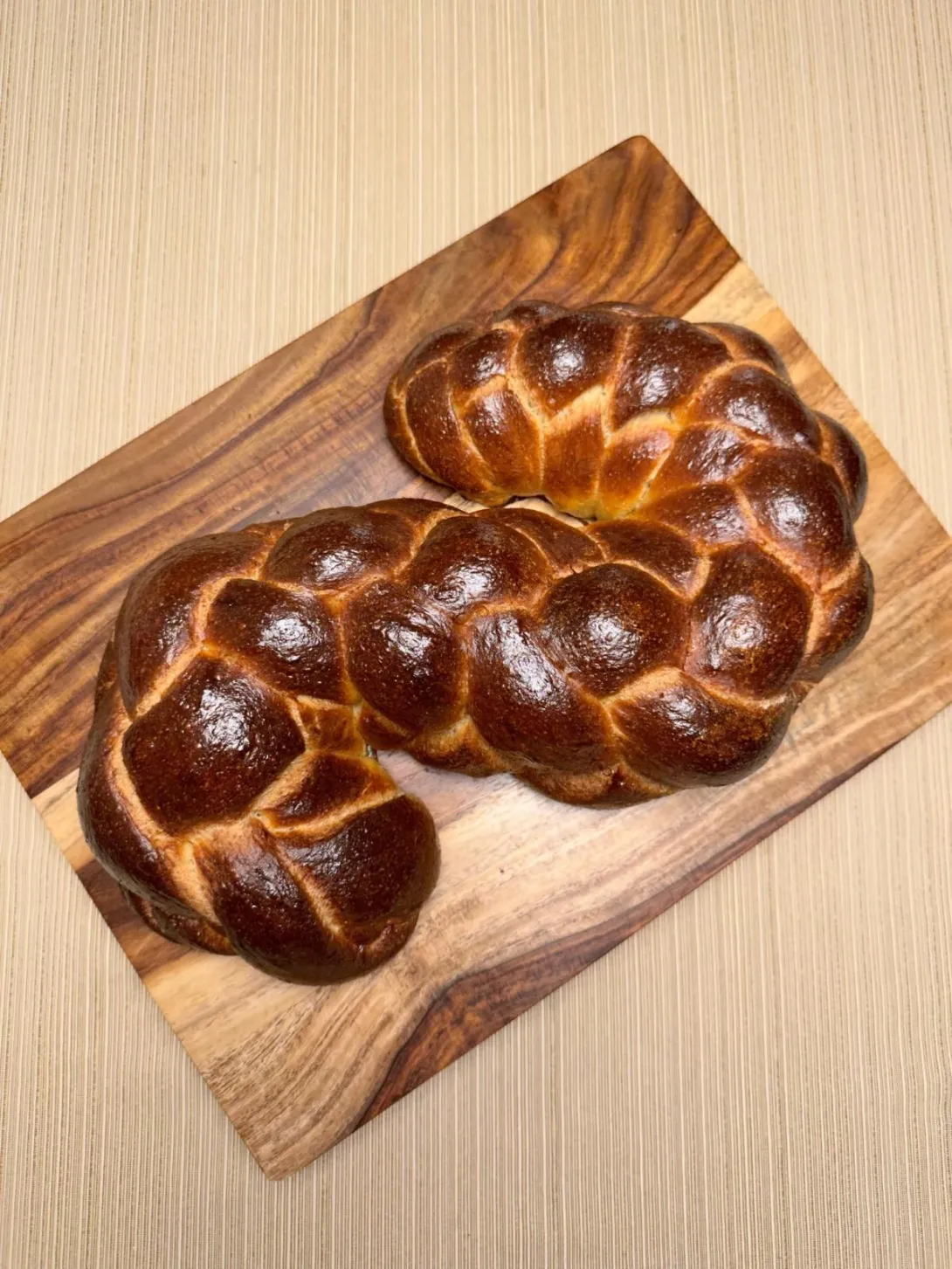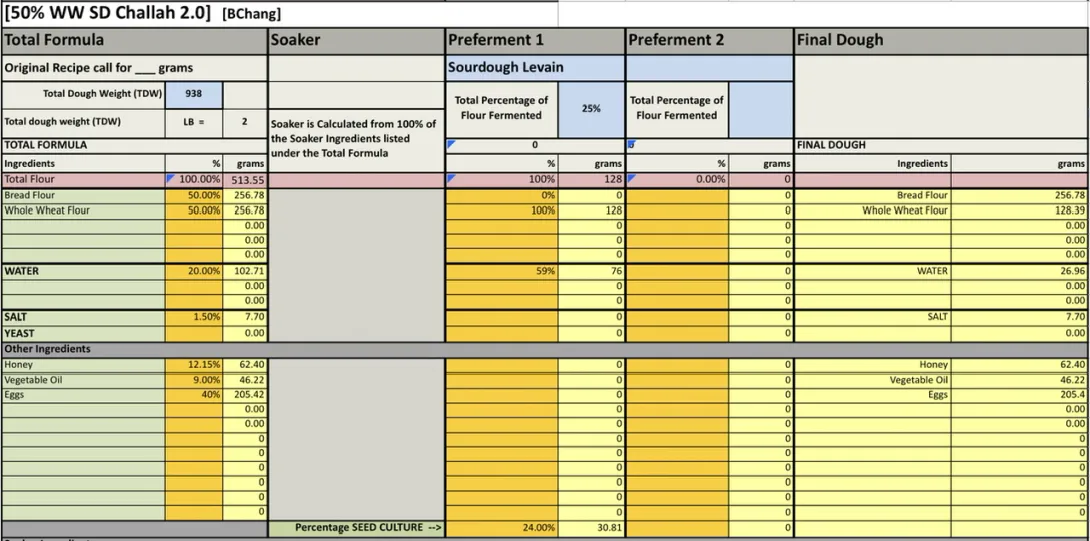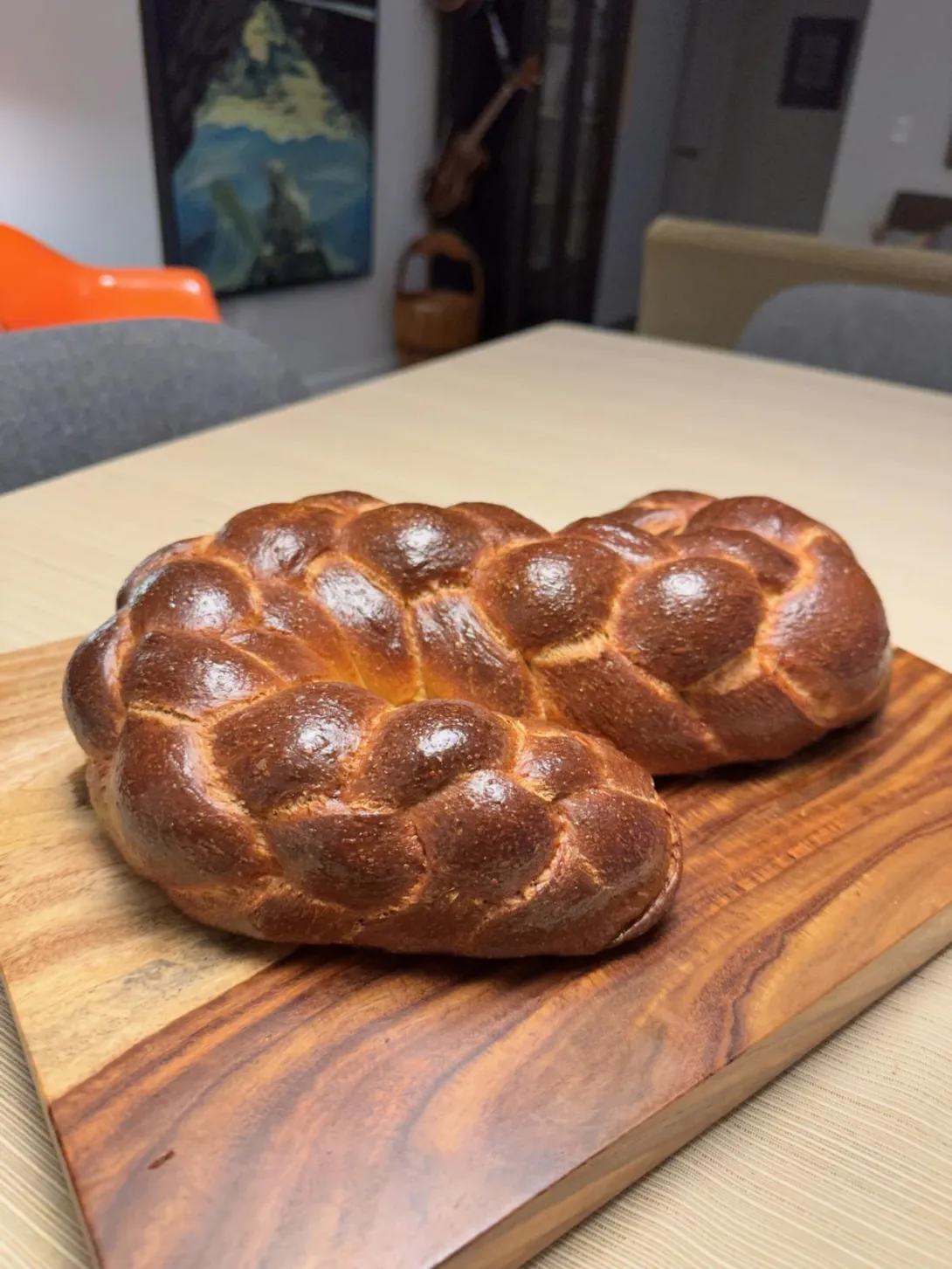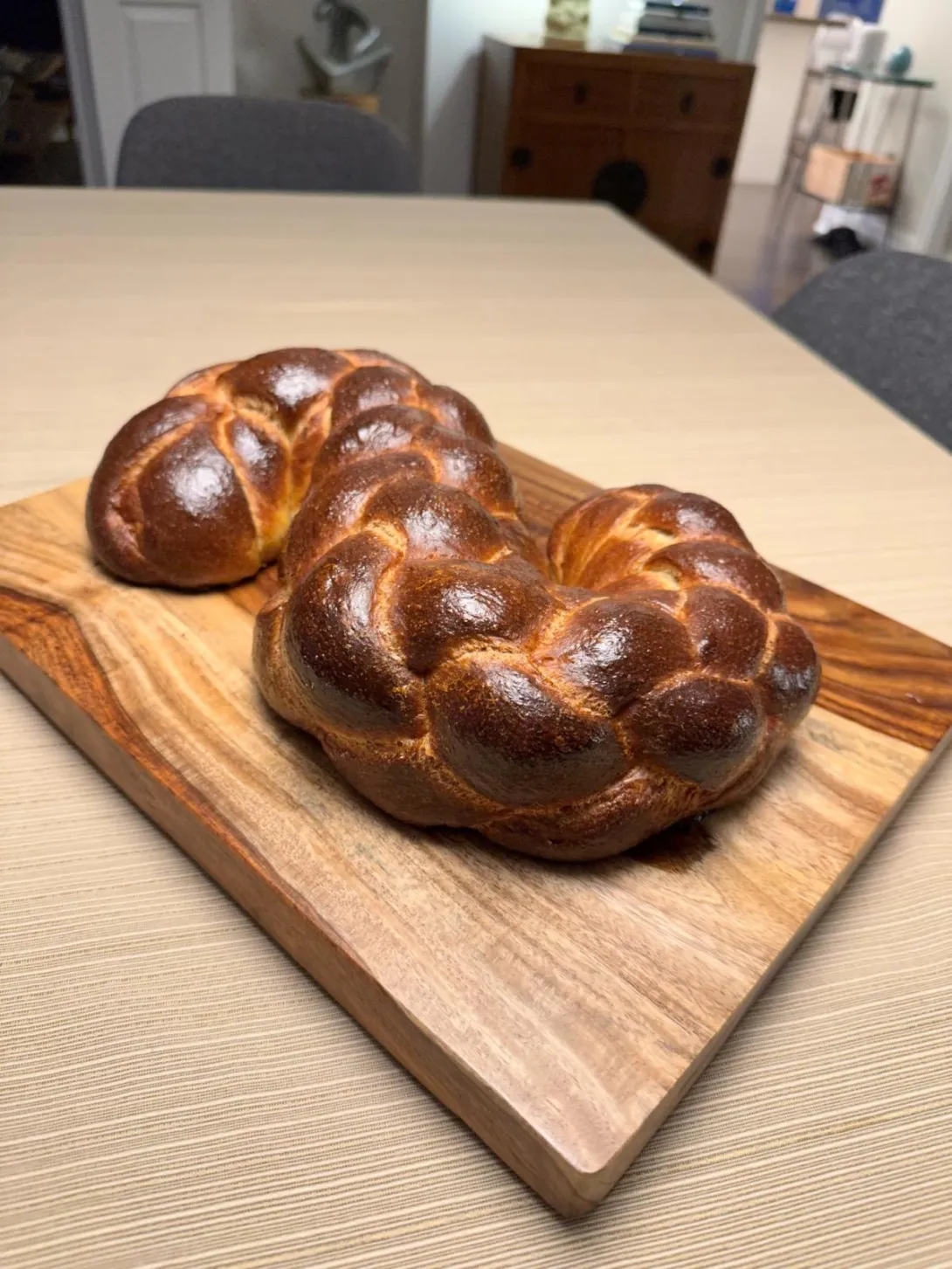My family has a lot of birthdays from December to January. My mother’s is one of them so we are having her over for brunch this weekend. My favourite thing to make for brunch is a strata, I’ve made a few now and they are always tasty. One thing I should do but haven’t is bake the challah a couple of days ahead so it can stale a bit. So I decided I’d bake a slight variation of challah by adding the zest of half an orange to my sourdough challah 50% whole wheat. I worked at getting the strands longer than usual, the challah ended up so long that it wouldn’t fit on my baking steel, so I shaped it into an S which I think looks nice. The strata I’m going to make will be strawberry mango. It won’t use the whole challah so I’ll be able to taste the bread on its own to see if the orange is a good addition or not.


Zest of one small orange or zest of half a large orange.
Overnight levain 78°F 9 hours peak 2.5x
Procedures
- The night before baking, mix the levain and ferment it at 76-78°F for 8-12 hours.
- In the morning, in a large bowl or the bowl of a stand mixer, add the levain then water, then mix in the 4 eggs, salt and honey and mix until completely combined.
- Mix in all the flour until it forms a shaggy mass.
- Knead the dough on the bench or in a stand mixer until it is smooth and there is moderate gluten development. The dough should be quite firm. Gradually add the oil, the dough may break down, wait until it comes back together and before you add more. Mix until gluten is well developed.
- Transfer the dough to a lightly oiled bowl and cover it tightly. Ferment for about 2 hours. It may not rise much. At 82°F it rose 20-25%
- To make one loaf, divide the dough into two equal portions, and divide each portion into the number of pieces needed for the type of braiding you plan to do, so divide each by 3 to make 1 six strand braided loaf.
- Form each piece into a ball and allow them to rest, covered, for 10-20 minutes to relax the gluten.
- Form each piece into a strand about 14” long. (I like Glezer's technique for this. On an un-floured board, flatten each piece with the palm of your hand. Using a rolling pin, roll out each piece to about ¼ inch thickness. Then roll up each piece into a tight tube. Using the palms of your hands, lengthen each piece by rolling each tube back and forth on the bench with light pressure. Start with your hands together in the middle of the tube and, as you roll it, move your hands gradually outward. Taper the ends of the tubeby rotating your wrists slightly so that the thumb side of your hand is slightly elevated, as you near the ends of the tube.). You can consider rolling each rope of dough in two different types of seeds at this point for a decorative effect, or only a few of the strands.
- Braid the loaves. Braiding somewhat loosely, not too tight.
- Place loaf on parchment paper on a sheet pan. Brush with egg wash. Cover well with plastic wrap (brush with oil so it doesn’t stick to the dough) or place the pans in a food grade plastic bag, and proof at room temperature until the loaves have tripled in volume. About 4-6 hours.
- If it's quadrupled and when poked the dough only springs back a little, preheat the oven to 180°C/350°F. Gauge the dough again. Stick a finger lightly in the dough. If it makes an indentation that doesn't spring back, the dough is ready to be baked. If not, wait a bit more.
- Pre-heat the oven to 350ºF with the rack in the lower third of the oven about 30 mins before final proof is complete.
- Brush each loaf with an egg lightly beaten with a pinch of salt. I do this twice.
- Optionally, sprinkle the loaves with sesame seeds and/or poppy seeds.
- Bake until done – 30-40 minutes rotating half way. If baking as one large loaf may take a bit longer, bake until sounds hollow or reaches 190ºF in the middle.
- Cool completely before slicing.


- Benito's Blog
- Log in or register to post comments
That looks really cool Benny. Looking forward to your taste results.
Tony
Thank you Tony, I really enjoy making challah, I love doing the plaiting.
Benny
Very nice job Benny. Love the plaiting.
Thank you very much Gavin. I really enjoy plaiting dough, it is very relaxing.
Crumb photos. The orange is a bit too subtle, next time I’d add all the zest of one medium orange or two small oranges, however, the orange does compliment the flavour of this bread.
You have certainly gotten this style of bread down pat. Great idea to add the zest and I’m sure next time you’ll get the amount down perfectly.
Happy baking!
Ian
Thank you Ian, they are fun to make and eat, so what’s not to love.
Happy baking.
Benny
Poppy seed in the dough always goes well with Orange and feel great on the tongue when eating . When you do a long plait do you start in the middle, it make the process much easier! Nice work Benny
Thanks Derek, you’re right starting in the middle would be easier, but then I’d have to make sure I reverse the pattern I think or flip the dough to continue with the same pattern. But either wouldn’t be that difficult. I’ll do that next time.
I’ve done orange poppy seeds in the past and you’re right they are well matched.
Benny